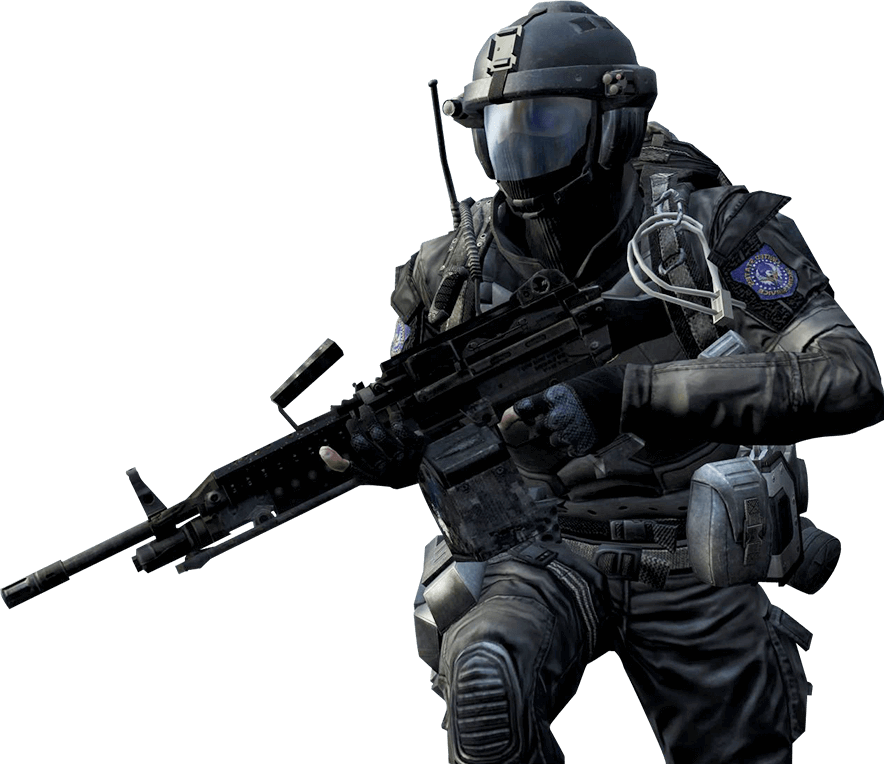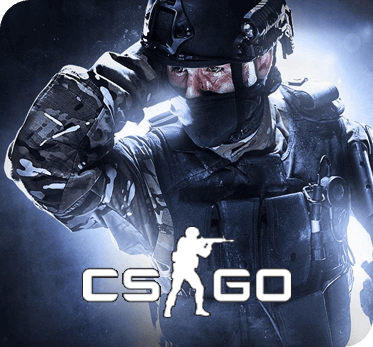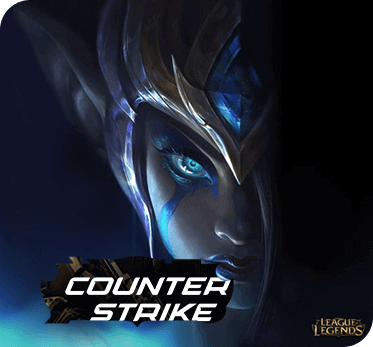Team gaming competition
Table of Contents
The Evolution of Team Gaming Competition
Team gaming competition has long surpassed the realm of casual play and has transformed into a world where digital gladiators showcase their prowess. From humble beginnings in LAN parties, now, entire ecosystems thrive on the competitive spirit of gamers. As someone deeply entrenched in the competitive scene through Gamebling, I've seen first-hand the meteoric rise of esports, where games like Counter Strike not only demand quick reflexes but also strategic acumen and team synergy.
The arena of team gaming competition has become a stage where every micro-decision can be the difference between victory and defeat. Teams spend countless hours honing their craft, analyzing every move, every play, perfecting strategies to outmaneuver opponents. Esports has crafted its own pantheon of digital athletes--individuals who started as casual players and ascended to become revered icons within the gaming community.
At Gamebling, while we emphasize individual skill with our monetary rewards system, we've observed that the essence of team gaming competition lies in unity. When a group of players syncs together like clockwork, the result isn't just gameplay--it's a performance, a dance of digital dexterity and tactical prowess. It's this synergy that can turn a group of skilled individuals into a championship-winning team.
The Makings of a Champion
Embarking on the journey of team gaming competition involves more than just assembling a group of top gamers. A champion team is akin to a well-oiled machine, with each part playing a pivotal role in the collective operation. Assembling a lineup of players who complement each other's playstyles and communicate effectively is crucial to rising through the ranks of competitive play.
Within the infrastructure of Gamebling, we've seen that success in team gaming competition often stems from diversity in skill sets. Players who specialize in different aspects of a game like Counter Strike, from sniping to strategizing, can cover more ground and adapt to various scenarios. This adaptive approach has been integral for teams to sustain their top positions in a rapidly evolving gaming landscape.
But even the most skilled teams need a platform for growth and a proving ground for their abilities. That's where Gamebling and other competitive platforms come into the picture--offering arenas where these teams can test their mettle and challenge their limits. In these spaces, the clash of titans isn't just entertainment; it's an exhibition of discipline, dedication, and a relentless pursuit of excellence.
Building a Cohesive Unit
The true test in the sphere of team gaming competition isn't found in the individual brilliance of players but in their ability to function as a cohesive unit. The synchronization of strategies, movements, and thought processes forms the cornerstone of any formidable team. This unity is cultivated not just in the heat of competition, but in the countless hours of practice and review sessions that form the unseen backbone of esports.
Gamebling acknowledges the significance of synergy by offering tools like "Map Heat Maps" that enable teams to visualize their gameplay and coordinate their efforts more effectively. These analytical tools provide insights into team dynamics, revealing the ebb and flow of their in-game movements and decision-making. Incorporating such data-driven feedback into training has become a hallmark of teams poised for success.
Personal insights from my time interacting with top teams have shown me that emotional intelligence is as crucial as technical skill. Teams that maintain high morale and support each other in moments of adversity are often the ones who find ways to reverse the tide of a losing match. The triumphs and tribulations of team gaming competition forge not just winners, but lifelong bonds that extend beyond the digital realm.
Moreover, the role of a coach or mentor in team gaming competition cannot be overstated. A figure with the expertise to guide, strategize, and sometimes mediate, can elevate a team's potential exponentially. The presence of a seasoned coach can be the catalyst that propels a promising team into the upper echelons of competitive gaming.
Embracing Tech in Team Gaming Competition
The integration of technology in team gaming competition has been a game-changer, quite literally. What was once a battle of sheer reflexes and raw talent has evolved into a sophisticated contest where technology plays a vital role. Through platforms such as Gamebling and their integration with systems like STEAM API, players have unprecedented opportunities to translate their skill into tangible rewards. This technological embrace extends to the tools teams use to analyze and improve their gameplay.
With real-time tracking of ELO ratings and personal performance metrics, players can now dissect their gameplay with clinical precision. This analytical approach to improvement resonates deeply within Gamebling's ethos, as we provide data-centric tools to our users. The advent of "Body Heat Maps" has revolutionized the way players perceive their positioning and engagement patterns.
The significance of these tech advancements is palpable when observing teams that have adopted a data-driven mindset. Their approach to team gaming competition is methodical, with every move backed by empirical data and every strategy crafted from a wealth of performance analytics. This meticulous attention to detail, empowered by technology, is the hallmark of a team that's not just playing the game but mastering it.
The Social Impact of Team Gaming Competition
Team gaming competition has created a digital culture that transcends borders and languages. Esports has carved out spaces where camaraderie is fostered, and cultural exchanges happen as naturally as in-game chats. Gamebling, while centralizing around individual earnings, has become part of this broader social mosaic by connecting players globally for a shared purpose.
One cannot overlook the social skills honed through team gaming competition. Players learn to navigate different personalities, communicate effectively under pressure, and build trust with their teammates. These are life skills that equip individuals for success beyond the screen, in the real world where collaboration and communication are key.
However, with the pros come the cons. As the stakes in team gaming competition rise, so does the intensity of the environment. Players, especially those in the formative years of their gaming careers, are prone to the pressures and demands of high-stakes competition. It's essential to foster an ecosystem where mental resilience is nurtured alongside gaming skill. Platforms like Gamebling contribute to this by ensuring fair play and an even playing field, which is vital for maintaining a healthy competitive spirit.
The Evolution of 5 vs 5 Competitive Gaming
The realm of 5 vs 5 Competitive gaming has evolved from pixelated screens in dimly lit arcades to prestigious arenas where the glare of the spotlight meets the glow of high-definition monitors. As someone deeply rooted in the eSports community through Gamebling, I've witnessed firsthand the surge of strategy and skill that defines this arena. In 5 vs 5 Competitive matches, players must balance individual prowess with seamless team coordination, creating a symphony of digital warfare that is as much about mental fortitude as it is about reflexes.
Each match is a testament to the intricate dance between attack and defense, where every second can pivot the outcome from glory to defeat. The beauty of 5 vs 5 Competitive gaming is in its universality; it transcends cultural and linguistic barriers, uniting players around a common objective--victory. Whether you're tuning in from the comfort of your home or amongst the roaring crowds of an eSports stadium, the thrill of competition is palpable.
In the context of Gamebling, the intensity is amplified by the real stakes at hand. When players wager on their performance, each headshot and tactical maneuver carries weight beyond the scoreboard. This direct link between skill and earnings has not only upped the ante but has also cultivated a more discerning breed of gamers who approach 5 vs 5 Competitive play with the seriousness of a professional athlete.
Building Community and Ensuring Fairness
The essence of 5 vs 5 Competitive gaming is not solely found in the games themselves but also in the communities that form around them. Gamebling's platform is a melting pot where camaraderie is forged in the fires of competition. As players engage in 5 vs 5 Competitive matches, they are not just opponents but also teachers and students, learning from one another in an ongoing exchange of strategies.
The importance of fairness cannot be overstated in this context. Gamebling addresses this by implementing an ELO system, ensuring that matches are evenly balanced and players are paired according to skill levels. This commitment to fairness extends to every facet of the platform, from the transparent fee structure to the data-driven insights provided to players. It's about creating an ecosystem that rewards skill, dedication, and improvement without compromising integrity.
Advancing Strategy and Skill Development
The analytical tools provided by Gamebling serve as a catalyst for player growth within the 5 vs 5 Competitive scene. By dissecting gameplay with "Body Heat Maps" and "Map Heat Maps," players gain an unprecedented understanding of their playstyle. It's as if one is given a mirror that reflects not just their image but the inner workings of their strategic mind.
These analytics enable players to adapt and overcome habitual errors, refining their approach with each match. In the 5 vs 5 Competitive realm, such adaptation is crucial. The platform's data-centric approach empowers players to evolve from casual participants to calculated tacticians, elevating their 5 vs 5 Competitive gameplay to new heights.
As we continue to shape the future of 5 vs 5 Competitive gaming, the crossroads of innovation and tradition is where Gamebling stands. By integrating real-world stakes with virtual battles, we're not just changing the way people play games--we're redefining what it means to be a gamer in the competitive arena. And as stakes become more meaningful, so does the thrill of the 5 vs 5 Competitive experience.
Dynamics of Five-player Team Matches
Five-player team matches are the beating heart of tactical gaming, where strategy and skill fuse to create an electrifying experience. At Gamebling, the thrill of competition is taken a notch higher with the ability to earn from each calculated move during a match. As someone deeply ingrained in this ecosystem, I've witnessed the camaraderie and intense collaboration that these matches engender. In games like Counter Strike, each member brings unique abilities to the table, making every position from rifler to in-game leader crucial for clinching victory.
Given the high stakes in this competitive scene, the emphasis on a level playing field is paramount. That's why we ensure that all participants in Five-player team matches are matched according to their ELO ratings, meticulously updated after each game. This careful calibration paves the way for equally balanced teams and fair play. As a result, we have crafted a hub where skills shine and the joy of a well-earned triumph is just a match away.
The rise of esports has made Five-player team matches more than just a pastime; they are a spectacle where the blend of strategic execution and split-second decision-making is celebrated. The synergy required among the five players is profound, and when this synergy materializes, it's a sight to behold and a triumph to partake in, especially on a platform like Gamebling that rewards your prowess.
The Social Dimension of Gaming
The realm of Five-player team matches goes beyond the digital battlegrounds; it's a catalyst for social bonds. As a member of Gamebling, I've observed players forging friendships through mutual respect and shared goals. These matches are a microcosm of society, demanding not just individual excellence but also a harmonious team dynamic. The interactions and shared experiences here are as real and compelling as any social event.
When the stakes are tangible, as they are with real cash on the line, the intensity amplifies. This intensity breeds a unique culture of trust within teams in Five-player team matches. The knowledge that your strategies, your gameplay improvements--fueled by our in-depth analytics--can lead to real-world benefits fosters a genuine commitment to each other's success.
Every match is an opportunity to learn and evolve, not just about in-game strategies, but about human interaction. With every callout, save, or strategic play, we are communicating, adapting, and growing. This is what sets Gamebling apart: the recognition that gaming is an inherently social venture and that the digital victories echo into our lives.
Personal Growth Through Competition
Five-player team matches on Gamebling provide more than just monetary incentives; they offer a platform for personal development. Each match is a chance to test one's leadership, problem-solving, and pressure management under the most intense circumstances. It's these moments, with the clock ticking down and the odds against you, that personal fortitude is honed.
Through the lens of professional experience, I can attest to the growth afforded by these matches. Engaging in Five-player team matches forces one to adapt quickly, think critically, and communicate effectively--all skills transferrable to numerous life scenarios. The analytics provided by Gamebling further empower players to become the architects of their improvement, pushing the envelope of what they thought possible in a game.
Competitive gaming transcends mere entertainment. It is a journey of discovery, where one uncovers strengths and weaknesses not just in their playstyle but in their character. Gamers learn resilience, strategic planning, and the value of every team member's role in navigating Five-player team matches toward victory. These lessons are invaluable, echoing far beyond the confines of the game.
As we continue to innovate and refine the competitive experience at Gamebling, our focus remains steadfast on the holistic development of players. We champion the notion that Five-player team matches are more than a pastime--they are a forge for character, intellect, and the indomitable spirit of the gamer.
How do you start a competitive gaming team?
Starting a competitive gaming team is an exciting journey, which begins with identifying your core game and the roles needed within that game. For us at Gamebling, where Counter-Strike is a staple, we understand that creating a balanced team requires a mix of different skills and personalities. Begin by scouting players who have a similar level of dedication and skill set. It's essential to prioritize communication and team chemistry over individual prowess. Once you have your roster, establish a routine for practice sessions and participate in smaller tournaments to build your team's experience. Remember, a cohesive unit is stronger than a set of lone wolves.
Is MLG still around?
Major League Gaming (MLG), once a titan in the esports industry, went through significant changes after its acquisition by Activision Blizzard in 2016. While MLG events are less prominent, the brand still exists and operates events for Activision Blizzard titles. At Gamebling, we take inspiration from such pioneering platforms and aim to carry the torch forward by providing competitive arenas where upcoming talents can shine and earn through their skills.
What are team video games called?
Team video games are commonly referred to as multiplayer online battle arenas (MOBAs), real-time strategy (RTS) games, and, notably in our case, first-person shooters (FPS) like Counter-Strike. In the esports world, these games are where players can truly demonstrate their ability to work as part of a team, often under the banner of clan or guild titles. At Gamebling, we celebrate this form of gaming and provide a platform where teamwork is not just encouraged but is essential for success.
What is the best esports team to join?
The 'best' esports team to join is subjective and varies based on personal goals, game preference, and skill level. The top-notch teams are typically those with a strong organizational structure, consistent performance, and a supportive environment for players to develop their skills. For anyone starting, I recommend looking for teams that value growth and comradery, which are foundational for a successful esports career.
How does team gaming competition influence social interactions and personal growth?
In the trenches of team gaming competition, players often build interpersonal skills that are invaluable in and out of the game. Through the pressure of competition and the camaraderie of shared objectives, players learn to communicate effectively, confront challenges collectively, and navigate a variety of social dynamics. At Gamebling, for instance, real money is on the line, which adds a layer of seriousness to these interactions. Such environments tend to foster mutual respect and a profound bond among team members, as they work together towards a common goal. More importantly, these experiences translate into personal growth, as each player learns about their own strengths, weaknesses, and the art of resilience when facing adversity.
Resources
- Entertainment Software Rating Board (ESRB) - Provides an independent standardized rating system for video games to help guide consumers.
- Centers for Disease Control and Prevention (CDC) - Coping with Stress - Offers valuable resources and insights on managing stress, an important aspect for players in high-stakes competitive gaming.
- National Science Foundation (NSF) - Discoveries - Discusses how research funded by NSF contributes to advances in gaming technology and strategies.
- Mental Health Foundation - Offers research and advice on mental health, particularly for young people, which is relevant for those in the competitive gaming sphere.
- StopBullying.gov - Cyberbullying - Provides resources on cyberbullying, an issue that may affect members of online gaming communities.
- National Center for Education Statistics (NCES) - PISA - Discusses the Program for International Student Assessment, which can include study areas such as problem-solving and teamwork, key skills in team gaming.
- World Health Organization (WHO) - Violence Prevention - Presents evidence and strategies for violence prevention, which can be a consideration in the context of the content of some competitive games.
- Youth.gov - Resources on Teen Dating Violence - Includes resources that can be helpful for understanding and promoting healthy relationships, even within competitive team environments.
- Library of Congress - Strategy and Tactics of World War II - Offers historical content on strategy and tactics that can potentially be applied to competitive gaming contexts.
- Science News - Discusses how video games can sharpen various cognitive skills that are beneficial in competition.



